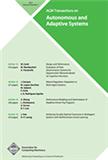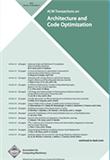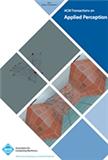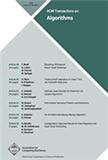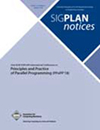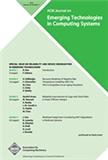Journal of Web Semantics
SCIE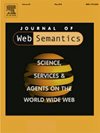
- 雜志名稱:網(wǎng)絡(luò)語義學(xué)雜志
- 簡(jiǎn)稱:J WEB SEMANT
- 期刊ISSN:1570-8268
- 大類研究方向:工程技術(shù)
- 影響因子:2.429
- 數(shù)據(jù)庫類型:SCIE
- 是否OA:No
- 出版地:NETHERLANDS
- 年文章數(shù):21
- 小類研究方向:工程技術(shù)-計(jì)算機(jī):人工智能
- 審稿速度:>12周,或約稿
- 平均錄用比例:容易
官方網(wǎng)站:http://www.journals.elsevier.com/journal-of-web-semantics/
投稿網(wǎng)址:http://ees.elsevier.com/jws/default.asp?pg=preRegistration.asp
Journal of Web Semantics
英文簡(jiǎn)介The Journal of Web Semantics is an interdisciplinary journal based on research and applications of various subject areas that contribute to the development of a knowledge-intensive and intelligent service Web. These areas include: knowledge technologies, ontology, agents, databases and the semantic grid, obviously disciplines like information retrieval, language technology, human-computer interaction and knowledge discovery are of major relevance as well. All aspects of the Semantic Web development are covered. The publication of large-scale experiments and their analysis is also encouraged to clearly illustrate scenarios and methods that introduce semantics into existing Web interfaces, contents and services. The journal emphasizes the publication of papers that combine theories, methods and experiments from different subject areas in order to deliver innovative semantic methods and applications.The Journal of Web Semantics addresses various prominent application areas including: e-business, e-community, knowledge management, e-learning, digital libraries and e-sciences.The Journal of Web Semantics features a multi-purpose web site, which can be found at: http://www.semanticwebjournal.org/. Readers are also encouraged to visit the Journal of Web Semantics blog, at http://journalofwebsemantics.blogspot.com/ for more information and related links.The Journal of Web Semantics includes, but is not limited to, the following major technology areas:? The Semantic Web ? Knowledge Technologies ? Ontology ? Agents ? Databases ? Semantic Grid and Peer-to-Peer Technology ? Information Retrieval ? Language Technology ? Human-Computer Interaction ? Knowledge Discovery ? Web StandardsMajor application areas that are covered by the Journal of Web Semantics are:? eBusiness ? eCommunity ? Knowledge Management ? eLearning ? Digital Libraries ? eScienceEach of these areas is covered by an area editor who supports the editors-in-chief. Furthermore, area editors manage the review process for submitted papers in the respective areas.The Journal of Web Semantics publishes four types of papers:? Research papers: Research papers are judged by originality, technical depth and correctness, as well as interest to our target readership. Research papers are recommended to have 15 - 25 pages in double column format.? Survey papers: We rarely accept survey papers, and beyond a sheer enumeration of relevant methods and systems, we expect a substantial technical insight to be gained by a survey paper. Survey papers are recommended to have 15 - 25 pages in double column format.? Ontology papers: We publish community-oriented description of ontology papers, if they generate interests from real-world users and semantic Web experts. Ontology papers are recommended to have 6 - 8 pages in double column format. Interested authors may here find a detailed Call-for-Ontology papers ? System papers: Widely adopted semantic systems and systems that generate a far above average amount of interest in the Semantic Web community, may be explained in systems papers. Systems papers are recommended to have 6 - 8 pages in double column format. Interested authors may here find a detailed Call-for-System papersShorter or longer papers are allowable, if the objectives of a paper warrant deviating length. Descriptions that are either unnecessarily short or long will negatively impact chances of acceptance.
Journal of Web Semantics
中文簡(jiǎn)介《網(wǎng)絡(luò)語義學(xué)雜志》是一本跨學(xué)科的雜志,它是基于多學(xué)科領(lǐng)域的研究和應(yīng)用,有助于知識(shí)密集型和智能化服務(wù)網(wǎng)絡(luò)的發(fā)展。這些領(lǐng)域包括:知識(shí)技術(shù)、本體論、代理、數(shù)據(jù)庫和語義網(wǎng)格,顯然,諸如信息檢索、語言技術(shù)、人機(jī)交互和知識(shí)發(fā)現(xiàn)等學(xué)科也具有重要的相關(guān)性。涵蓋了語義Web開發(fā)的所有方面。還鼓勵(lì)出版大規(guī)模實(shí)驗(yàn)及其分析,以清楚地說明將語義引入現(xiàn)有Web界面、內(nèi)容和服務(wù)的場(chǎng)景和方法。該期刊強(qiáng)調(diào)出版結(jié)合不同學(xué)科領(lǐng)域的理論、方法和實(shí)驗(yàn)的論文,以提供創(chuàng)新的語義方法和應(yīng)用。《網(wǎng)絡(luò)語義學(xué)雜志》主要介紹各種應(yīng)用領(lǐng)域,包括:電子商務(wù)、電子社區(qū)、知識(shí)管理、電子學(xué)習(xí)、數(shù)字圖書館和電子科學(xué)。《Web語義學(xué)雜志》以一個(gè)多用途網(wǎng)站為特色,該網(wǎng)站位于:http://www.semanticwebjournal.org/。此外,我們還鼓勵(lì)讀者訪問《Web語義雜志》博客http://journal of web semantics.blogspot.com/,了解更多信息和相關(guān)鏈接。《Web語義雜志》包括但不限于以下主要技術(shù)領(lǐng)域:?語義網(wǎng)?知識(shí)技術(shù)?本體論?代理?數(shù)據(jù)庫?語義網(wǎng)格和對(duì)等技術(shù)?信息檢索?語言技術(shù)?人機(jī)交互?知識(shí)發(fā)現(xiàn)?網(wǎng)絡(luò)標(biāo)準(zhǔn)《Web語義雜志》涵蓋的主要應(yīng)用領(lǐng)域包括:?電子商務(wù)?共同體?知識(shí)管理?電子學(xué)習(xí)?數(shù)字圖書館?科學(xué)知識(shí)每個(gè)區(qū)域都由一個(gè)區(qū)域編輯器覆蓋,該編輯器支持總編輯器。此外,區(qū)域編輯負(fù)責(zé)管理各區(qū)域提交論文的審查過程。《Web語義雜志》發(fā)表了四種類型的論文:?研究論文:研究論文是根據(jù)原創(chuàng)性、技術(shù)深度和正確性以及對(duì)目標(biāo)讀者的興趣來判斷的。研究論文建議有15-25頁的雙欄格式。?調(diào)查報(bào)告:我們很少接受調(diào)查報(bào)告,除了對(duì)相關(guān)方法和系統(tǒng)的全面列舉,我們希望調(diào)查報(bào)告能夠獲得實(shí)質(zhì)性的技術(shù)見解。調(diào)查報(bào)告建議有15-25頁的雙欄格式。?本體論論文:我們發(fā)布面向社區(qū)的本體論論文描述,如果他們從現(xiàn)實(shí)世界用戶和語義Web專家那里獲得興趣的話。本體論文建議有6-8頁的雙欄格式。感興趣的作者可以在這里找到對(duì)本體論論文的詳細(xì)要求。?系統(tǒng)論文:廣泛采用的語義系統(tǒng)和在語義Web社區(qū)中產(chǎn)生遠(yuǎn)遠(yuǎn)高于平均水平的興趣的系統(tǒng),可以在系統(tǒng)論文中進(jìn)行解釋。系統(tǒng)文件建議有6-8頁的雙欄格式。感興趣的作者可以在這里找到系統(tǒng)論文的詳細(xì)需求如果紙張的目標(biāo)允許長(zhǎng)度偏差,則允許使用較短或較長(zhǎng)的紙張。不必要的短或長(zhǎng)的描述將對(duì)接受的機(jī)會(huì)產(chǎn)生負(fù)面影響。
Journal of Web Semantics
中科院分區(qū)| 大類學(xué)科 | 分區(qū) | 小類學(xué)科 | 分區(qū) | Top期刊 | 綜述期刊 |
| 計(jì)算機(jī)科學(xué) | 2區(qū) | COMPUTER SCIENCE, ARTIFICIAL INTELLIGENCE 計(jì)算機(jī):人工智能 COMPUTER SCIENCE, INFORMATION SYSTEMS 計(jì)算機(jī):信息系統(tǒng) COMPUTER SCIENCE, SOFTWARE ENGINEERING 計(jì)算機(jī):軟件工程 | 2區(qū) 2區(qū) 2區(qū) | 否 | 否 |
Journal of Web Semantics
JCR分區(qū)| JCR分區(qū)等級(jí) | JCR所屬學(xué)科 | 分區(qū) | 影響因子 |
| Q2 | COMPUTER SCIENCE, SOFTWARE ENGINEERING | Q2 | 2.77 |
| COMPUTER SCIENCE, ARTIFICIAL INTELLIGENCE | Q3 | ||
| COMPUTER SCIENCE, INFORMATION SYSTEMS | Q3 |
Journal of Web Semantics
中科院JCR分區(qū)歷年趨勢(shì)圖Journal of Web Semantics
影響因子精選同類領(lǐng)域期刊,熱門推薦輕松get~
-
- ACM Transactions on Autonomous and Adaptive Systems
- 期刊ISSN:1556-4665
- 大類研究方向:工程技術(shù)
- 影響因子:
- 數(shù)據(jù)庫類型:SCIE
- 咨詢投稿
-
- ACM Transactions on Architecture and Code Optimization
- 期刊ISSN:1544-3566
- 大類研究方向:工程技術(shù)
- 影響因子:1.444
- 數(shù)據(jù)庫類型:SCIE
- 咨詢投稿
-
- ACM Transactions on Applied Perception
- 期刊ISSN:1544-3558
- 大類研究方向:工程技術(shù)
- 影響因子:
- 數(shù)據(jù)庫類型:SCIE
- 咨詢投稿
-
- ACM Transactions on Algorithms
- 期刊ISSN:1549-6325
- 大類研究方向:工程技術(shù)
- 影響因子:
- 數(shù)據(jù)庫類型:SCIE
- 咨詢投稿
-
- ACM SIGPLAN NOTICES
- 期刊ISSN:0362-1340
- 大類研究方向:工程技術(shù)
- 影響因子:
- 數(shù)據(jù)庫類型:
- 咨詢投稿
-
- ACM Journal on Emerging Technologies in Computing Systems
- 期刊ISSN:1550-4832
- 大類研究方向:工程技術(shù)
- 影響因子:2.013
- 數(shù)據(jù)庫類型:SCIE
- 咨詢投稿
精選常見問題,答疑解惑輕松get~
- 三篇ssci論文怎么同時(shí)投出去
- 中文核心和sci哪個(gè)影響力更大
- 中科院一區(qū)和JCR一區(qū)期刊占比區(qū)別
- 發(fā)ssci如何快速找合適的期刊
- 資源保護(hù)方面論文投sci指導(dǎo)
- 外貿(mào)行業(yè)論文發(fā)ssci周期長(zhǎng)嗎
- 國(guó)外的sci投到錄用一般多久
- ssci期刊國(guó)內(nèi)認(rèn)可度
- 核能應(yīng)用論文翻譯英文發(fā)sci容易的方法
- 人口老齡化研究論文符合ssci領(lǐng)域嗎
- sci開源和不開源分別是什么意思?有什么影響?
- ssci發(fā)表是高水平學(xué)術(shù)論文嗎
- 生態(tài)修復(fù)主題英文論文會(huì)收錄哪些數(shù)據(jù)庫
- 哲學(xué)專業(yè)論文發(fā)英文期刊
- 中科院sci四個(gè)區(qū)的劃分
- ssci期刊和sci期刊的區(qū)別
- ESCI和SCIE要分清
- ssci送審論文多久出結(jié)果
- ssci論文二作有用嗎
- 水土保持類英文期刊好選嗎
- ssci期刊論文一定會(huì)檢索嗎
 投稿咨詢
投稿咨詢

